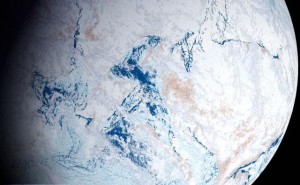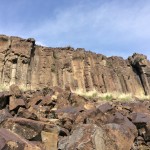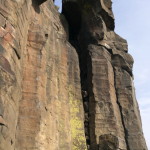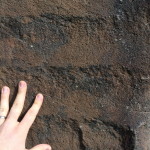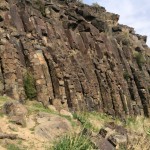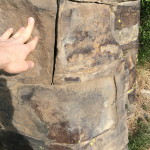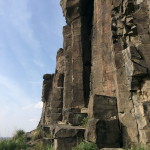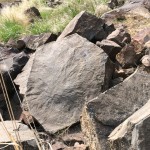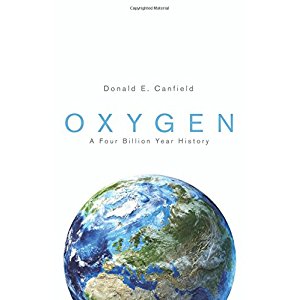 I just finished Don Canfield‘s book Oxygen, a sweeping exploration of the history of Earth’s most volatile atmospheric constituent.
I just finished Don Canfield‘s book Oxygen, a sweeping exploration of the history of Earth’s most volatile atmospheric constituent.
Canfield starts by exploring how cyanobacteria generate oxygen during photosynthesis and how the process evolved. For instance, chloroplasts, the photosynthetic power plants of cyanobacteria, were once free-floating cyanobacteria themselves that took up residence in and eventually merged with eukaryotes that evolved into present-day cyanobacteria.
Subsequently, Canfield discusses Earth’s oxygen removal and renewal processes – decomposition of organics burns up oxygen, while their rapid burial preserves it.
The next several chapters present the geochemical evidence for changes in oxygen throughout Earth’s history, including variations in the ratios of different isotopes, sensitive to biological and abiological processes. Since I teach a class on astrobiology at Boise State, I focused a lot of attention on these parts, trying the piece together the interplay between biology and geology betokened by the isotopic variations.
One element of that story especially relevant to my class: variations in the carbon-13 isotope. As it turns out, one enzyme in cyanobacteria, RuBisCO, helps convert atmospheric C02 into organic carbon compounds, but it preferentially selects the lighter carbon-12 isotope 2.5% more often than the carbon-13 isotope. The organic compounds built using RuBisCO are therefore slightly depleted in carbon-13 relative to the atmosphere and when they are later incorporated into geological strata, the slight depletion gives a measure of how much life was around when the stratum was laid down.
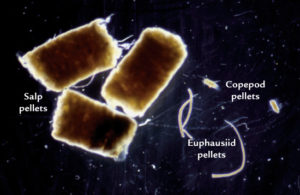
Zooplankton salp pellets. From http://www.whoi.edu/oceanus/feature/will-ocean-iron-fertilization-work.
The book contained lots of other appealing details. For instance, it’s not exactly clear what caused an enormous variation in oxygen on Earth 580 million years ago, a sea change in Earth’s history matter-of-factly called the Great Oxygenation Event. But one explanation has to do with the evolution of a new kind of poop:
The idea is that zooplankton [newly evolved 580 million years ago] produce fast-sinking fecal pellets. These would decompose less in the upper layers of the ocean as they sink […] when compared to the smaller, slowly settling microbial biomass [that had previously predominated]. (pp. 135-136)
Since the old sinking biomass took a long time to sink to the ocean floor, it had a long time for bacteria to decompose it, using up a lot of oxygen in the process. But the new, faster-sinking poop made it to the ocean floor before it decomposed much and so left the oxygen dissolved in the ocean instead.
I did have to spend a lot of time reading and re-reading the discussions of geochemical cycles and signals because it’s been a long time since high school chemistry for me, but I was willing to struggle through these parts because I found the underlying story so interesting.
So a really fascinating and challenging read about the complex (and poop-filled) evolution of Earth’s bio-geo-atmosphere.
